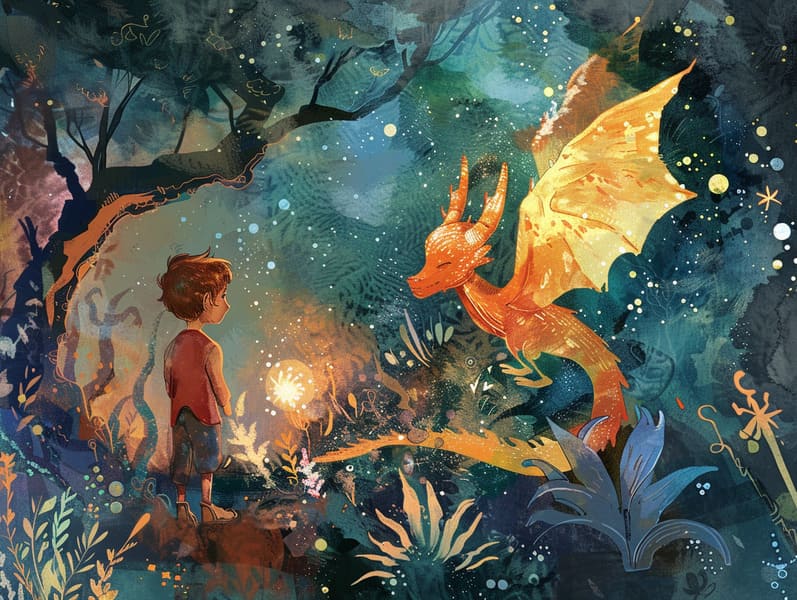The Emergence of Traditional Fairy Tales with Their Persistent Charm.

Children's fairy tales have historical significance. These tales have been shared from one generation to the next millennia before they were ever documented. They arose from a variety of backgrounds, including African traditions. They were initially told among grown-ups, often carrying themes and messages related to the societal norms and beliefs of the time.
The renowned Brothers Grimm, Jacob and Wilhelm Grimm, were among the first to compile and publish many of these beloved fairy tales. Their compilation, "Grimm's Story Collection," included stories like "Cinderella," "Hansel and Gretel," and "Little Snow White," which have since become cornerstones in the world of classic fairy tales. Similarly, Hans Andersen's fantastical tales, such as "The Little Mermaid," and "The Story of the Ugly Duckling," have touched hearts worldwide, ensuring their place in the pantheon of timeless fairy tales.
Though they are centuries old, these tales remain as meaningful as ever, especially as bedtime stories for kids. These delightful tales are now available in various formats, including artistically illustrated books, magical animations, and web-based fairy tales.
Their persistent charm can be traced to several fascinating points:
Key Lessons: Ancient fairy tales often teach important moral lessons. Fairy tales like "The Story of the Boy Who Cried Wolf" teach the value of being truthful, while "The Story of the Tortoise and the Hare" demonstrate the qualities of perseverance and modesty. These narratives offer little ones clear distinctions between truth and falsehood, shaping their moral compass in a gentle yet deep way.
Compassion and Knowledge: Ancient fairy tales frequently showcase characters facing difficulties and adversities, stimulating children to understand with their struggles and champion their triumphs. For instance, "The Tale of Beauty and the Beast" teaches us the merit of looking deeper to acknowledge the inner self of a person, advancing perception and awareness.
Cultural Awareness: Many traditional fairy tales are imbued with the cultural contexts from which they originated. Exploring these tales can provide captivating looks into different traditions, promoting a sense of global understanding and perception.
Imagination and Creativity: The enchanted elements in old fairy tales—magic wands—generate children’s imaginative ideas. These fairy tales transport readers to extraordinary realms, activating creative thinking and a sense of wonder that endures a lifetime.
Old fairy tales are not only charming but also informative. They serve as charming tools in enhancing various mind and heart abilities in young readers. When traditional fairy tales are spoken out loud, they nurture language acquisition by introducing new phrases and sophisticated sentence structures. This practice also promotes hearing abilities and mindfulness, as young readers pay close attention, expectant to see what happens next.
Furthermore, reflecting on the themes and characters of ancient fairy tales can sharpen critical thinking and logical thinking. Children this site are guided to discover patterns, make predictions, and catch on to cause and effect. These reflections also benefit little ones voice their thoughts and feelings, adding to their emotional intelligence.
In today’s modern era, the abundance of online storybooks has made these tales more within reach than ever. Internet resources and applications feature comprehensive collections of timeless fairy tales that can be viewed or listened through anytime, anywhere. Fairy tales voiced are particularly in demand, presenting an interactive method for little ones to take part in these spellbinding stories. Read-aloud books and voiced videos guide characters and settings to life, often supported by entrancing soundtracks and instrumentals that heighten the storytelling experience.
The timeless fascination of classic fairy tales lies in their ability to adjust to modern times while sustaining their underlying messages. Contemporary versions of these tales often incorporate more multicultural protagonists and modern settings, making them understandable to today’s audience. However, the core values of daring, kindheartedness, and equity remain unchanged, continuing to impact kids of all ages.
Classic fairy tales also offer a sense of security and understanding. They allow a well-ordered narrative with a evident beginning, middle, and end, often finishing with the finalization of conflicts and the triumph of goodness over badness. This assuredness can be solacing for little ones, affording a sense of unchangeability in an shifting world.
Old fairy tales continue to captivate and teach new generations, maintaining their magic and applicability in modern society. As bedtime stories for kids, they supply a perfect blend of charm and enlightenment, nurturing moral values, empathy, and creativity. The presence of online fairy tales and the in demand status of fairy tales told out loud ratify that these traditional fairy tales remain attainable to new generations.
By sustaining and telling these tales, we continue to treasure the rich tapestry of storytelling and cultural heritage. Whether you are perusing a beautifully illustrated book, browsing a cyber collection, or listening to an voice book, the majesty of ancient fairy tales is always within reach. These narratives emphasize of the eternal effect of storytelling and its ability to gather us across time and space.
Be it you are discovering a artistically illustrated book, delving into a web-based collection, or listening through an read-aloud story, the majesty of classic fairy tales is always within reach.
These narratives emphasize of the perpetual spell of fairy tales and its ability to link us across eras and regions, casting a charm that captivates and teaches alike.